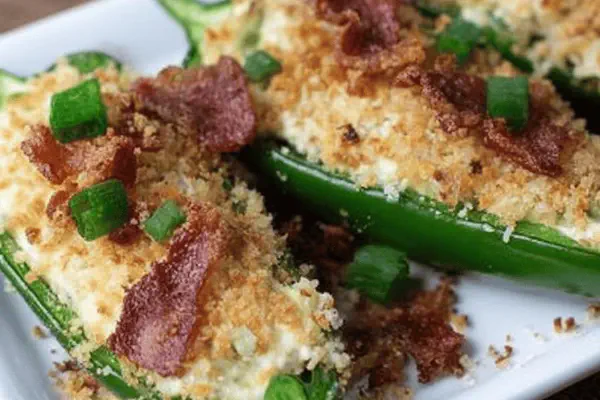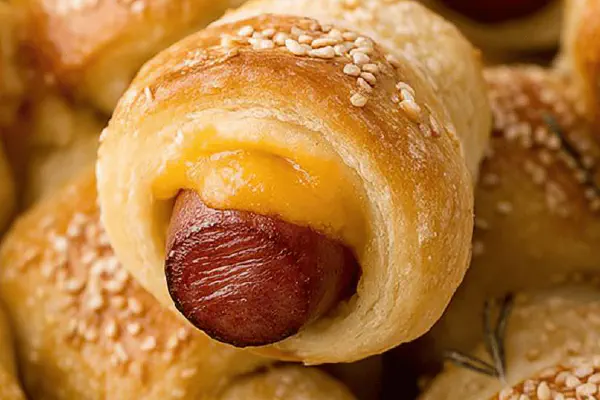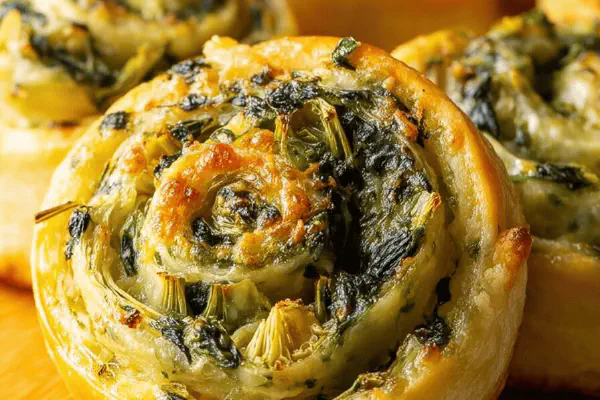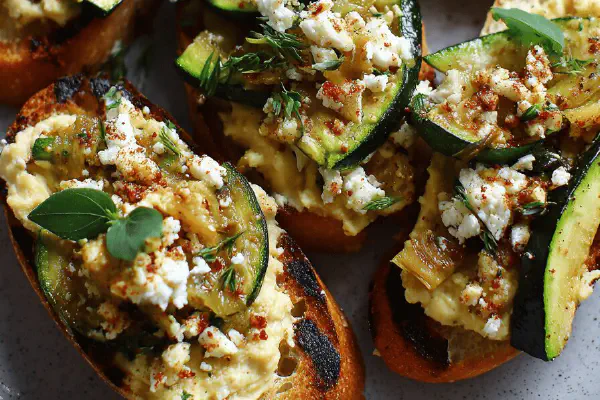Gruyère Morel Fondue
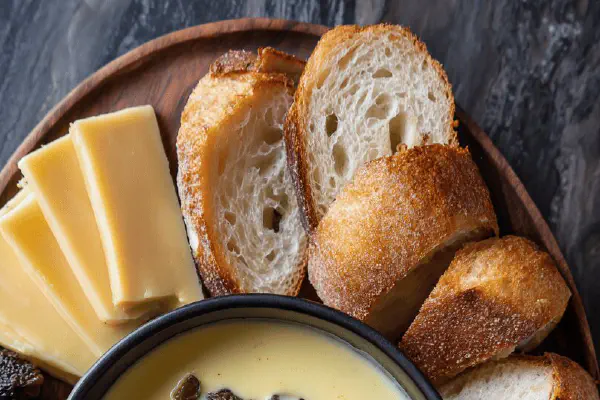
E
By Emma
Certified Culinary Professional
•
Recipe tested & approved
Rich melty gruyère melds with rehydrated morels in white wine. Garlic-rubbed pot, cornstarch binds cheese and wine. Dip crisp bread cubes. Fewer morilles, swapped for fresh shiitakes; pinot gris for riesling. Tweaked timing; aroma signals readiness. Rustic, earthy, tangy. Wine soaking revives mushrooms, boosts depth. Stir constant; cheese strings summon patience. Caquelon sizzles softly, bubbles whisper doneness. Perfect crust? Avoid grit. Garlic rub essential; no bitterness. Long steep morilles, not mushy. Quick preheat, low simmer. Chunky bites soak, smile guaranteed. Refined simplicity with umami punch. Tested, toasted, and tasted—never bland.
Prep:
20 min
Cook:
18 min
Total:
38 min
Servings:
6 servings
#French cuisine
#fondue
#mushrooms
#cheese
#rustic bread
#wine cooking
Gruyère fondue with morels. Forget instant cheese melts; patience with cheese and wine matters. Morels soaked long, bring woodsy bite, not just texture. Tried fresh mushrooms before; less robust. Dry white wine choice critical — pinot gris adds fruit balances dryness. Garlic, subtle but necessary, rubbed inside pot for aroma depth—skip if you hate a bite of raw garlic. Stir relentlessly, avoid burnt strings stuck on pot. Sizzle sound becomes your cue — fondue nearly ready. Bread cubes critical; dense rustic loaf soaks cheese without turning to mush. Every batch varied, depending on cheese humidity and wine acidity, so rely on senses, not clock. Learned to keep heat low. Too fast, cheese breaks, grainy mess. Slow melting wins every time.
Ingredients
- 20 g dried morels, rinsed, drained, sliced
- 260 ml dry white wine, pinot gris or chasselas
- 600 g grated gruyere cheese
- 25 ml cornstarch or arrowroot powder
- 1 garlic clove halved
- 1 loaf rustic bread cut in cubes
About the ingredients
Morels: fresh are fine, but dry give concentrated flavor after soaking. Shiitakes or chanterelles work too, less intense. Wine should be dry; sweeter wines throw fondue off balance. Pinot gris is my twist — more floral, less crisp than riesling. Cornstarch indispensable. Arrowroot powder is good substitute; avoids cloudiness. Gruyère key. Can mix half comté or emmental if budget or flavor craving. Garlic rubbed inside caquelon, big flavor impact without overwhelming. Bread: country loaf or baguette — thick crust preferred to avoid soggy cubes quickly. Toast bread lightly if fondue will sit longer at table. Avoid nuts or eggs — old-fashioned fondue; pure simplicity.
Method
- Soak morels in wine for 35 minutes. Mushrooms should plump but hold chewy texture. Reserve soaking liquid.
- Mix gruyere with cornstarch thoroughly. Ensures cheese melts smooth, no stringy globs.
- Rub inside of fondue pot with garlic halves; leave in for subtle aroma. Too much garlic? Toss after step 4.
- Off heat, combine cheese and wine from soak. Use low steady heat; slow melt while stirring constantly. Watch texture closely — no boiling, just thickening and bubbling gently.
- Add sliced morels when cheese is almost fully melted. Stir to incorporate mushrooms evenly. Their smokey earthiness blooms here.
- Transfer pot to burner on low, keep the fondue warm but not scorching. Should jiggle slightly when shaken. If thickens too much, splash leftover wine.
- Serve immediately with bread cubes. Toast bread lightly if prefer crunch contrast.
- Cleanup tip: soak fondue pot in hot water immediately after; cheese residue hardens quickly.
Cooking tips
Soak mushrooms long enough until plump but not soggy. Use soaking wine later in cooking, don’t discard—it’s flavorful but not bitter. Garlic rub? Essential, but remove if too pungent. Melt cheese slowly off medium heat, stir constantly using wooden spoon or whisk to prevent clumps or burning. The fondue is ready when cheese is smooth and bubbles just around edges, no direct boil. Add mushrooms last to retain texture and aroma. Keep fondue warm on low flame — tip: a small simmer can cause cheese to separate. If it thickens too much, add a little soaking wine in small increments. Serve immediately with bread cubes to enjoy crisp contrast. Quick soak fondue pot after use to ease cleanup; cheese dries hard and stubborn otherwise.
Chef's notes
- 💡 Soak dried morels in white wine long enough to plump but not soggy. Avoid mushy mushrooms. Use soaking liquid later to keep aroma deep. Fresh shiitakes work as sub; milder. Dry wine mandatory — sweeter knocks balance off. Pinot gris adds floral notes, switch to riesling if preferred but keep dry. Rusty garlic rub on pot prevents bitterness yet adds subtle aroma. Remove if too strong after initial melt phase. Cornstarch key for texture, prevents graininess; arrowroot substitute good, no cloudiness. Always stir constant, no boiling. Listen for gentle bubbles and soft sizzle signals.
- 💡 Heat low and slow wins here. High heat breaks cheese, makes grainy mess. Off heat mixing before slow melt ensures smooth melt. Add mushrooms last to keep texture chew, aroma intact. If fondue thickens too fast, splash leftover wine little by little, no sudden floods. Bread choice impacts experience — thick crust rustic loaf keeps cubes firm, soaks cheese without turning mushy. Toast lightly only if fondue waits. Garlic rub inside fondue pot not optional in my view; adds subtle depth without overpowering — but skip if raw garlic bite turns you away.
- 💡 Avoid direct boil at all costs. Bubbles should whisper around edges not roar. Stirring with wooden spoon or whisk avoids clumps and scorching. Timing matter — aroma strong, strings form when cheese ready. Remove heat at right moment; hold warm on low flame afterward. Fondue should jiggle slightly when shaken, signaling good texture. Cleanup tip: soak pot immediately in hot water post-use; cheese residue hardens like concrete if left. Keep stirring gently through holding phase; prevents crust but keeps warmth even.
- 💡 Use a garlic half to rub caquelon for subtle essence before heat. Leave garlic in for step 4 then discard if too pungent. Chunky mushroom bites soak cheese flavor, chew surprises mid-bite. Less mushrooms means less earthiness, adjust to taste but don’t overdo or risk mush. Mixing half Gruyère with comté or emmental okay for budget or flavor shifts. Wine and cheese humidity vary batch to batch. Rely on senses not clock for timing. Rustic simplicity with umami punch — no shortcuts on melt and stir.
- 💡 Avoid nuts and eggs; this is old-school fondue. Keep it clean, simple, textured. Watch for thickening signs, act fast with wine splash to loosen if needed. Mushrooms soak wine, release woodsy notes, won’t taste raw if timing right. Serve quickly with bread cubes to enjoy crunchy contrast. Toast if fondue sits longer. Sizzle and smell guide doneness better than time. Keep heat steady low once cheese melting, never high or boil. Rely on smell, sound, texture cues to hit that sweet spot.
Common questions
Can I use fresh morels?
Fresh okay but less flavor punch. Dry needed for concentrated woodsy taste. Soaking long needed. Fresh mushrooms don’t hold same chewy texture post-soak. Keep soaking wine for depth.
What to do if fondue breaks or grainy?
Heat too high main cause. Fix by adding more cornstarch blend or wine little by little. Stir constantly; avoid boiling. If broken, cool slightly then stir back slowly.
Can other mushrooms replace morels?
Shiitakes good milder sub. Chanterelles less intense too. Avoid watery varieties; texture and flavor differ. Adjust soak time; soaking wine critical for aroma.
How to store leftovers?
Fondue can be refrigerated in airtight container for 1-2 days. Reheat on low with splash of wine to loosen. Avoid microwave or high heat to prevent cheese seizing. Reheat slow, stir often.
